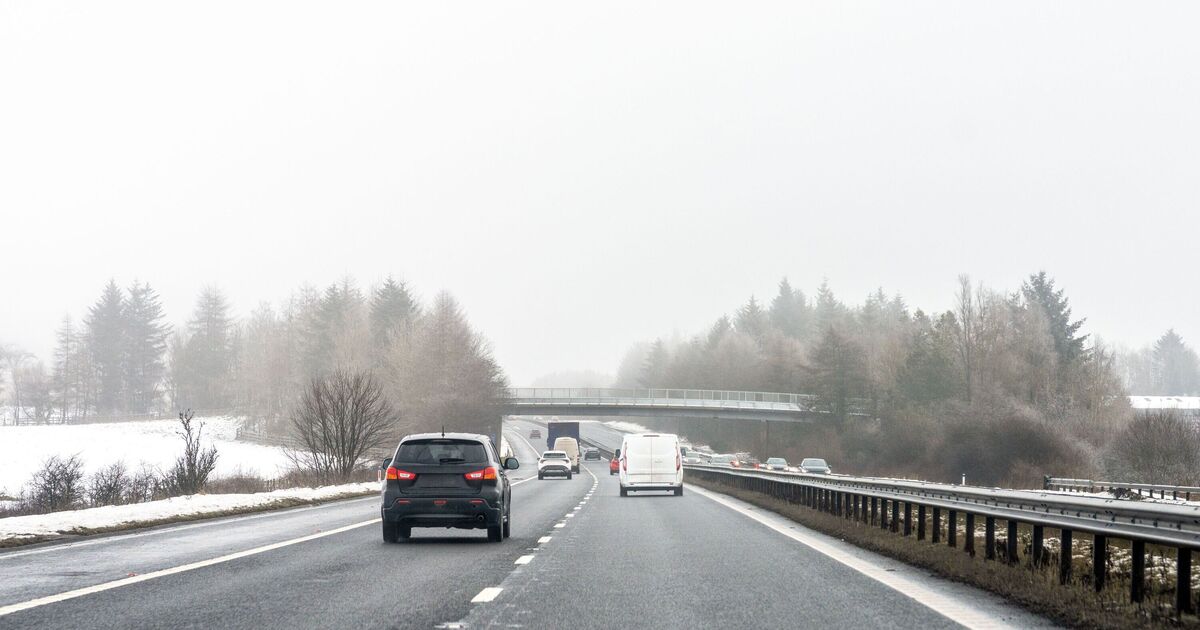An AA spokesperson has shared three quick yet essential steps drivers ought to take before embarking on a journey in the winter. The cold weather is well underway, with unpredictable conditions like ice, snow, rain and more all the more common and likely.
This can make driving much more perilous and anxiety inducing. Research by vehicle history platform carVertical showed January was the month which came with the highest risk of crashing (10.3%) but the current month of November wasn’t far behind, with a 9.8% risk.
Warmer weather and lighter days, for the most part, seem to coincide with a lower risk of accident, with April at 7% and September at 7.1% – though June recorded a 9.2% risk. It’s important for drivers to be mindful and aware of the potential dangers the winter weather can bring to the roads.
With this in mind, the AA has shared a round-up of important checks all drivers should be completing with their cars.
Speaking directly to the camera, a spokesperson began: “Don’t neglect your car. Here’s three checks you can do in the time it takes to make a cup of tea.”
Number one – check your oil level
The AA explained: “Do this to make sure your engine stays nice and lubricated and healthy. Make sure you do this before any long journey.”
Oil levels vary from car to car so it’s important to get into the habit of checking yours every few weeks so you know what’s right for your vehicle.
The correct level should be halfway between the minimum and maximum levels on the dipstick. Not all cars are fitted with a dipstick, some have electric oil readers so be sure to check your user manual so you know what to look for.
Number two – check your tyre tread
The AA spokesperson said this is important “to make sure you’ve got enough grip and traction along the road”.
He added: “Do this before any long journey and make sure you’re always within the legal limit.”
Motoring retailer Halfords explains: “Driving with worn tyres is not only a serious safety risk, but a costly one too.
“In the UK, the fine for bald tyres is £2,500 plus three points on your licence per tyre, so it’s essential to check them monthly for any signs of damage or wear.”
The minimum legal tread depth is 1.6mm. Halfords adds: “However, most motoring organisations recommend changing your tyres before the tread gets to this level.”
Number three – refill your washer fluid
This handy liquid is used to help clear your windshield and is typically made up of a mixture of water, cleaning agents and – crucially – anti-freeze compounds.
The AA said: “Do this to make sure you’ve got clean vision through your windscreen.
“Don’t just use water, though – make sure you use a high quality additive to make sure it doesn’t freeze through the winter months.”
It’s vitally important to ensure your windscreen is clear when you’re driving. If you don’t ensure you’re able to see the road clearly, you could get in serious trouble.
The Highway Code requires all windscreens and windows to be kept clean and free from obstructions to vision.
It cautions “before you set off, you must be able to see, so clear all snow and ice from all your windows” and continues “you must ensure that lights are clean and number plates are clearly visible and legible”.
This is further supported by section 41D of the Road Traffic Act 1988, which makes it a legal requirement to be able to see the road ahead clearly before you set off.
If you drive with an obstructed view, you could incur a fine or, worse, be involved in an accident.

